- U-I-R-Messtechnik
- Signalgeneratoren
- Frequenzmesser
- Oszilloskope
- Analyzer & Wobbler
- Leistungsmesstechnik
- R-L-C-Messtechnik
- Prüftechnik, Spezialmesstechnik
- Energieversorgung
- Funktechnik
- Radar & GHz
- NF & HiFi
- Licht & Optik
- Steuer- & Regelungstechnik
- Telefonie & Kommunikation
- Mechanik
- Avionik
- Sammeln & Seltenes
- Bauelemente
- ...
- Röhrenliste
- Manuals & Schaltpläne
- sonstiges...
Informationen
Wanderfeldröhre UVS-6B
Art.Nr.: roe-wan-0049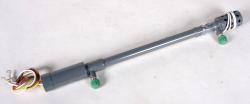
* Hochfrequenz- Leistungsverstärker
* Kathodenstrahlröhre
* Technische Daten siehe Datenblätter
Wanderfeldröhre UVS-6B, УВС-6Б
Hochfrequenz- Leistungsverstärker UVS-6B, russische Bezeichnung УВС-6Б.Wanderfeldröhre UVS-6B, УВС-6Б:
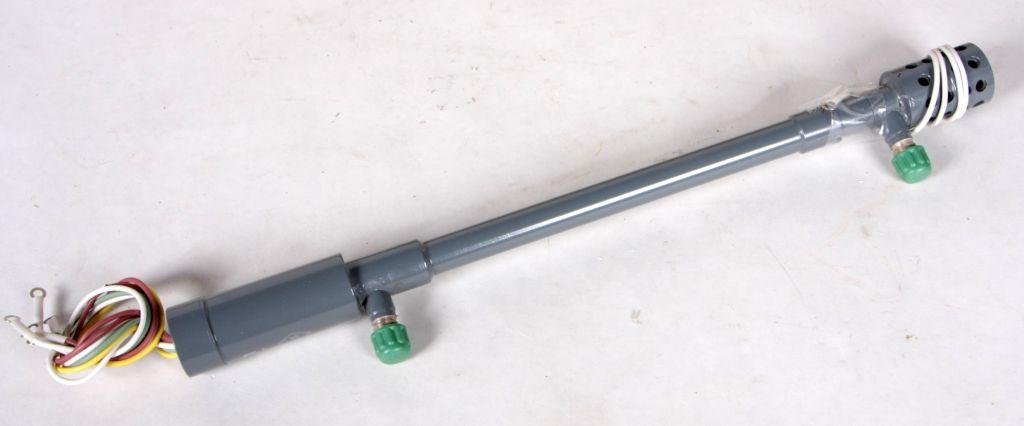

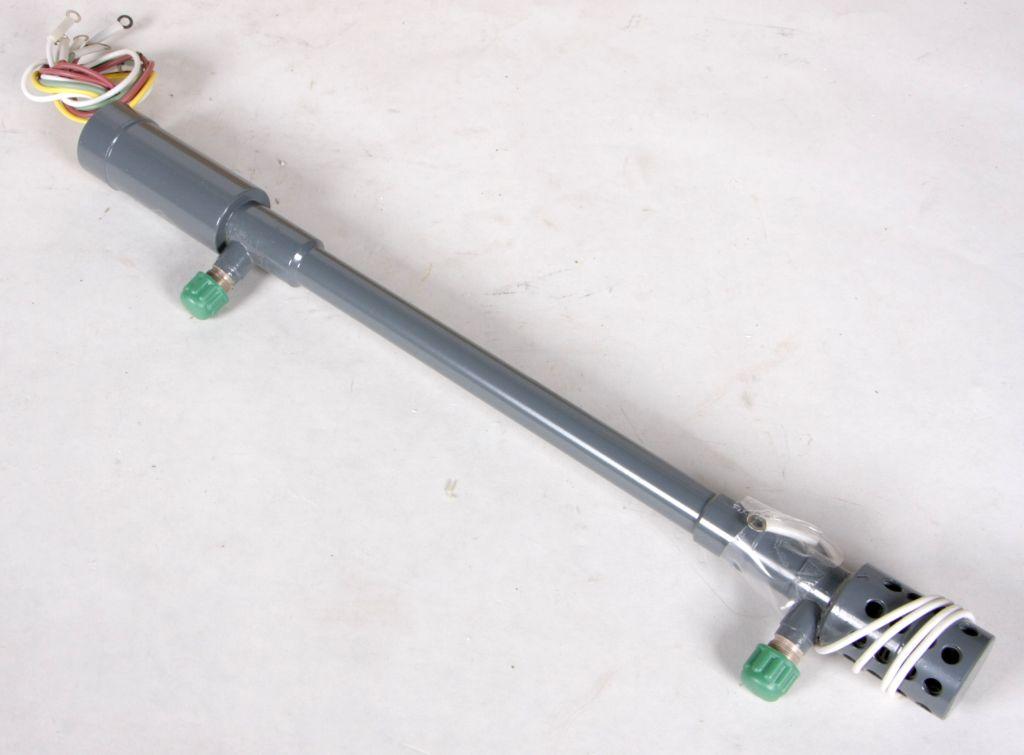
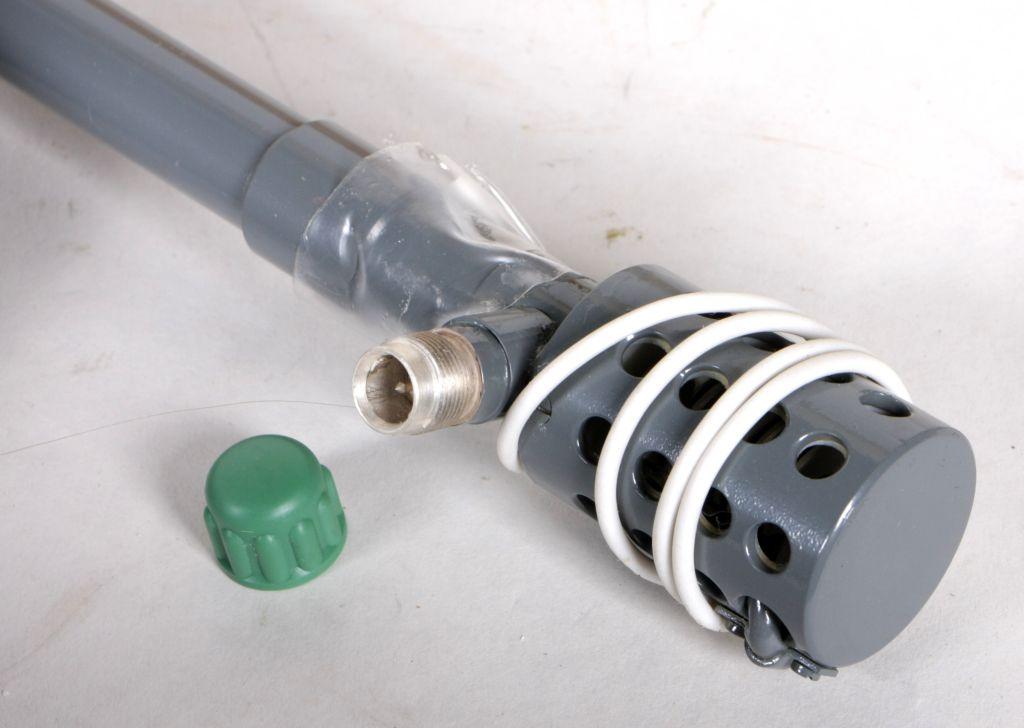
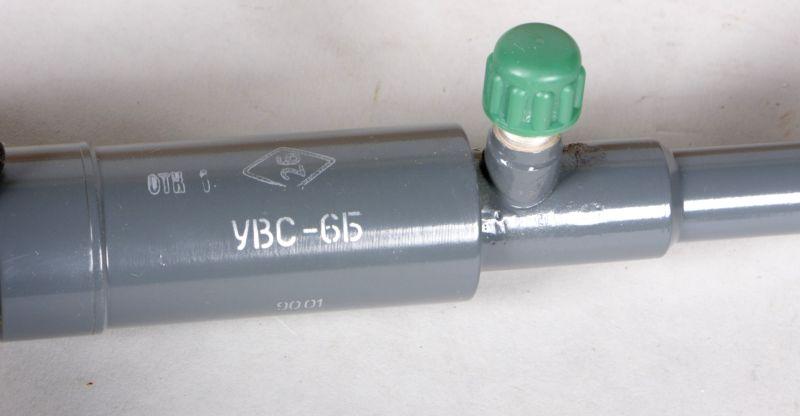
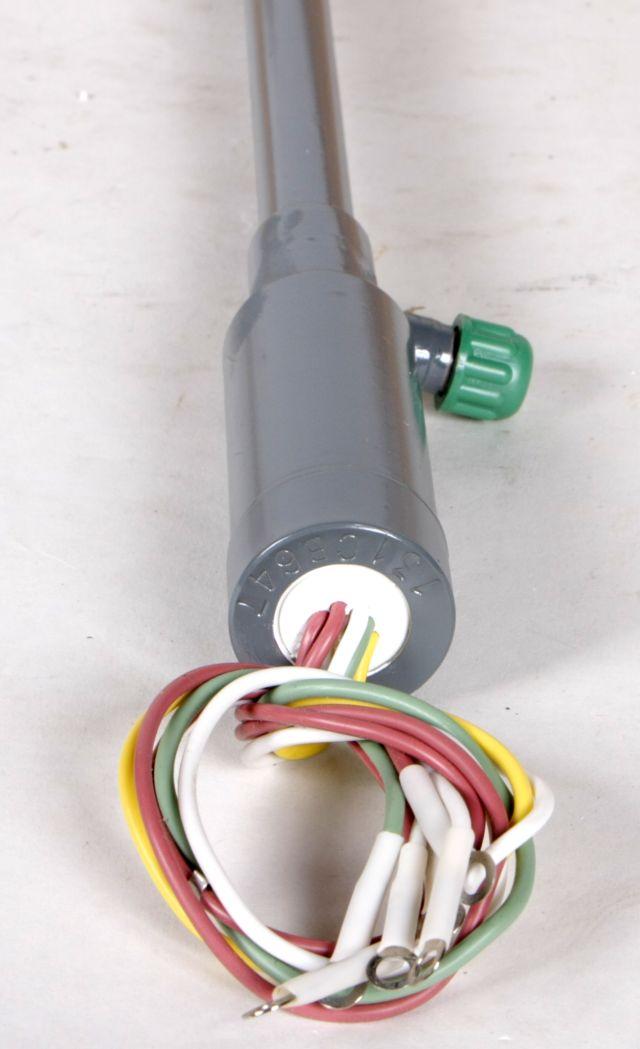
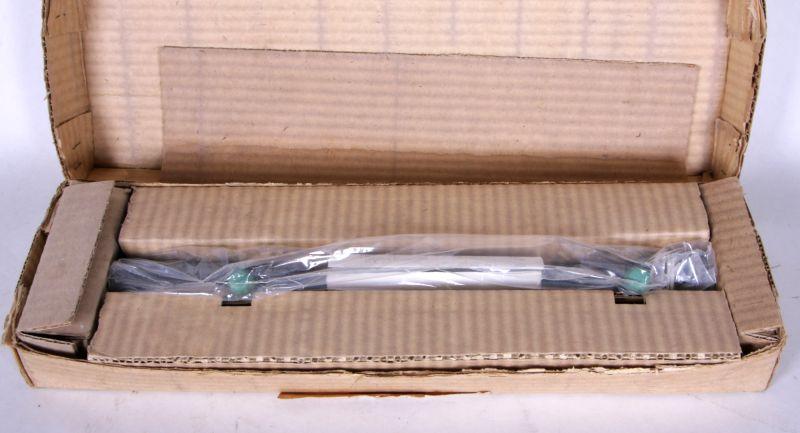
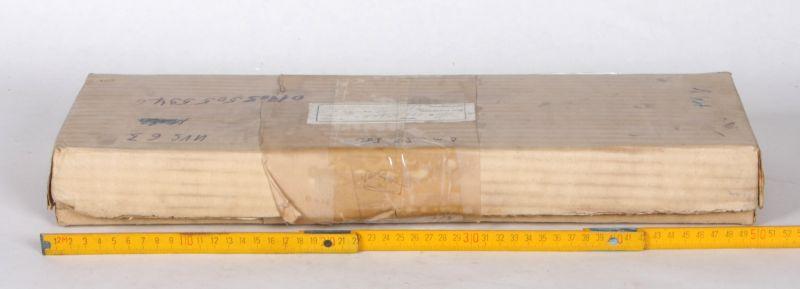
Datenblätter Wanderfeldröhre UVS-6B, УВС-6Б
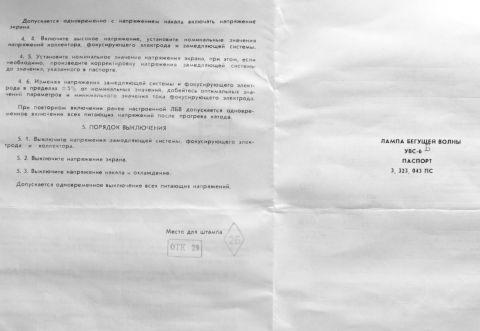
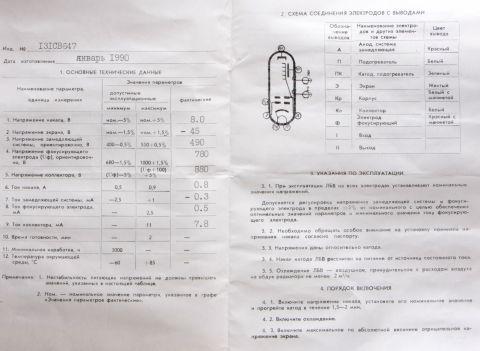
Wanderfeldröhre UVS-6B, UWS-6B, УВС-6Б
PRINCIPAL TECHNICAL DATA
TRAVELLING-WAVE TUBE UVS - 6
| Denomination of parameter, measurement unit | Significances of parameters | ||
| allowable operating | actual | ||
| minimal | maximum | ||
| 1. Filament voltage, V | nom-5% | nom+5% | |
| 2. Screen voltage, V | nom-1.5% | nom+1.5% | |
| 3. Slow-wave structure voltage, V | nom-0.5% | nom+0.5% | |
| 4. Focusing electrode voltage (Uf), V | nom-1.5% | nom+1.5% | |
| 5. Collector voltage, V | (Uf)-5% | (Uf+100)+5% | |
| 6. Filament current, A | 0.5 | 0.9 | |
| 7. Slow-wave structure current, mA | – | -2.5...+1 | |
| 8. Focusing electrode current, mA | – | 2.5 | |
| 9. Collector current, mA | – | 11 | |
| 10. Operating range, MHz: UVC-6A, UVS-6A UVC-6B, UVS-6B |
880-1760 1200-1600 |
– – |
880-1760 1200-1600 |
| 11. Power gain in linear regime, dB in band 880-1760 MHz in band 1200-1600 MHz |
25 28 |
– – |
|
| 12. Gain flatness in linear regime in band 1200-1600 MHz, dB | – | 4 | |
| 13. Power gain in nonlinear regime in band 1200-1600 MHz, dB | 27 | – | |
| 14. Maximum output power, mW | 70 | – | |
| 15. Output power in operating range at the absence of input power, µW | – | 70 | |
| 16. Total starting time, min | – | 2 | – |
| 17. Minimum operating time, h | 3000 | – | – |
| 18. Ambient temperature, °C | -60 | +85 | – |
Notes:
- Instability of the supplying voltage must not exceed the significances indicated in the present table.
- Non-nominal significance of a parameter indicated in the column "Significances of parameters actual".
ELECTRODES-TO-LEADS CONNECTION DIAGRAM
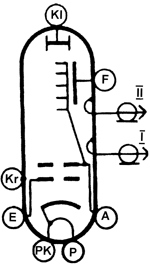 |
Designation of leads | Denomination of electrodes and other elements of diagram | Colour of lead |
| A | Anode, slow-wave structure | Red | |
| P | Heater | White | |
| PK | Cathode, heater | Green | |
| E | Screen | Yellow | |
| Kr | Case | White with a cuff | |
| Kl | Collector | White | |
| F | Focusing electrode | Red with cuff | |
| I | Input | ||
| II | Output |
OPERATION INSTRUCTIONS
During the TWT operation all electrode
voltage must be set to the nominal values.
It is permitted to adjust the slow-wave structure voltage and focusing
electrode voltage in the limits ±5% of nominal in order to
get optimal parameters and minimum value of the focusing electrode
current.
The nominal electrical regime is chosen by the producer for a given
specimen of the TWT in the following limits:
| ilament voltage of | 8 V; |
| screen voltage of | -150 to -5 V; |
| slow-wave structure voltage of | 400 to 550 V; |
| focusing electrode voltage of | 680 to 1000 V; |
| collector voltage of Uf(nom)to Uf(nom) | +100 V; |
delay time of the switching on of the electrode voltage after
the switching on of the filament voltage not less than 1.5 min.
Voltages are given respectively the cathode.
Special attention should be paid to setting the nominal filament
voltage as stated in the certificate.
During the TWT operation it is necessary to observe all requirements of
safety of servicing electro-installation with the voltages over 1000 V.
It is forbidden to switch on and off the leads of the TWT to the power
supply when the supply voltages are switched on.
During the TWT operation it is necessary to control voltages of all
electrodes and currents in the slow-wave structure circuit, focusing
electrode and collector, it is not allowed to deviate of allowable
values indicated in the present certificate.
Filament cathode of the TWT is designed for the supply of DC source.
The TWT is forced air cooled with air consumption on the heatsink
blowing 2 m3/h.
SWITCH ON PROCEDURE
Switch on the filament voltage, set its
nominal value and heat the cathode during 1.5 - 2 min.
Switch on the cooling.
Switch on maximum by the absolute value the negative screen voltage.
It is permitted to switch on the screen voltage with the filament
voltage simultaneously.
Switch on the high voltage set the voltages of collector, focusing
electrode and slow-wave structure to the nominal values.
Adjust the nominal screen voltage, in case of need adjust the slow-wave
structure voltage to the value as stated in the certificate.
Changing the slow-wave structure voltage and focusing electrode voltage
in the limits ±5% of nominal values, provide optimal
parameters and minimum focusing electrode current.
By repeated switching on of the adjusted TWT it is allowed to switch on
simultaneously all supply voltages after the cathode has been heated.
SWITCH OFF PROCEDURE
Switch off the voltages of the slow-wave structure, focusing
electrode and collector.
Switch off the screen voltage.
Switch off the filament voltage and cooling.
It is permitted to switch off all supplying voltages simultaneously.
Allgemeines zur Wanderfeldröhre:
Die Wanderfeldröhre gehört zu den Laufzeitröhren.
Eine Laufzeitröhre ist eine Elektronenröhren zur Erzeugung oder -Verstärkung von Mikrowellen. Laufzeitröhren finden also ihre Anwendung in der Hochfrequenztechnik.
Bei den Laufzeitröhren sind die Entladungssyteme so konstruiert, daß Laufzeiteffekte das Funktionieren der Röhre bewirken.
Zunächst wird eine homogene Elektronenströmung konstanter Geschwindigkeit erzeugt, deren Elektronen dann einem steuernden elektrischen HF-Feld ausgesetzt werden, in dem sie je nach Startphase beschleunigt oder verzögert werden.
Bei den Langzeitröhren unterscheidet man zwischen Triftröhren und Lauffeldröhren.
In der Praxis verwendete Laufzeitröhren sind Zweikammer- und Mehrkammerklystrons, Wanderfeldröhren, Rückwärtswellenröhren und Magnetrons sowie gewisse Hybridformen wie Wanderfeldklystrons.
Die Wanderfeldröhre dient der Verstärkung elektrischer Signale. Der Elektronenstrahl wird durch ein nicht mitgezeichnetes homogenes axiales Magnetfeld, herrührend von einem auf möglichst gewicht- und raumsparende Weise gestalteten Elektro- oder Permanentmagneten, oder auch von einem periodischen Permanentfeld, fokussiert und zum Elektronenauffänger geführt. Die zu verstärkende HF-Leistung wird katodenseitig auf die Wendelleitung gekoppelt, wohingegen die verstärkte HF-Leistung kollektorseitig ausgekoppelt wird.
Wanderfeldröhren werden wegen ihrer guten Linearität (Breitbandeigenschaften) und Rauscharmut und wegen des großen Leistungsspielraumes mannigfaltig eingesetzt, z.B. in Bodenstationen für Satellitenfunk mit Dauerstrichleistungen im kW-Bereich, als Satellitenröhren (bis herab zu 20 W interessant; 650g Masse) und für Richtfunktechnik (2700 Kanäle bei 6 ... 7 GHz) sowie für die Radar-Impulstechnik mit Impulsleistungen bis zu mehreren MW. Die Wanderfeldröhre ist ein weit verbreitetes Bauteil in der Radartechnik.
Der Frequenzbereich der Verstärkung ist kleiner als 0,05 dB x MHz hoch -1 im ganzen Bereich, bei optimaler Frequenz sogar noch eine Zehnerpotenz geringer.
Die Zuverlässigkeit der Wanderfeldröhren ist groß, die Lebensdauer dieser Laufzeitröhren liegt bei Größenordnungen von 20 000 Stunden.















